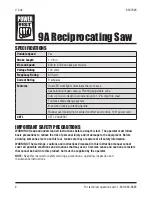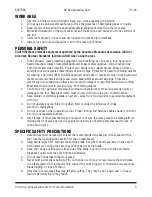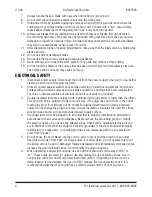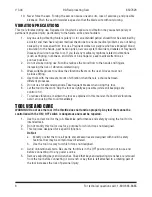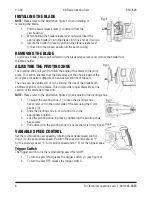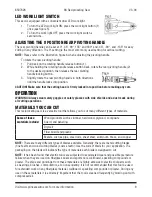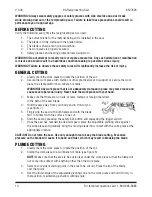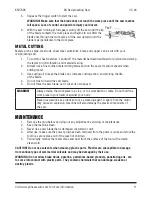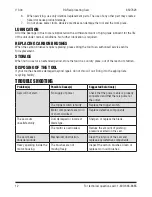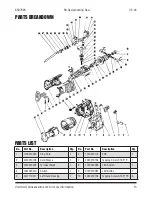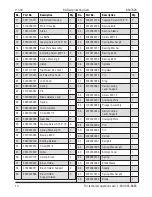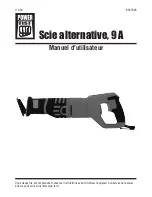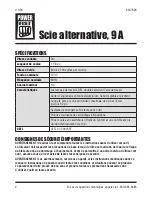
4
For technical questions call: 1-800-665-8685
V 3.04
8507626
9A Reciprocating Saw
7. Always handle the saw blade with care when mounting or removing it.
8. Do not start the tool when the blade is touching the work piece.
9. Hold power tools by insulated gripping surfaces when performing an operation where the
cutting tool may contact hidden wiring or its own cord. Contact with a “live” wire will also
make exposed metal parts of the power tool “live” and shock the operator.
10. Always use blades that are designed to be used with this saw. Blades that do not match
the mounting hardware of the saw may be launched with great force from the saw causing
damage to property or personal injury. A blade that does not match the mounting hardware
may also run eccentrically, causing loss of control.
11. After changing a blade or making adjustments, make sure that the blade clamp is holding the
blade securely.
12. Do not use dull or damaged blades.
13. Do not use the tool on any material containing asbestos.
14. Avoid cutting nails. Inspect the work piece for any nails and remove before cutting.
15. Do not touch the blade or the surface that has been cut with this tool immediately after use.
The surface will be hot and may cause an injury.
ELECTRICAL SAFETY
1. Disconnect power supply. Disconnect the tool from the power supply when not in use, before
cleaning, servicing or changing any parts.
2. Protect yourself against electric shocks when working on electrical equipment. Avoid body
contact with grounded surfaces such as pipes, radiators, cooking stoves and refrigerators.
There is an increased chance of electrical shock if your body is grounded.
3. Double insulated tools are equipped with a polarized plug (one blade is wider than the other.)
This plug will fit in a polarized outlet only one way. If the plug does not fit fully in the outlet,
reverse the plug. If it still does not fit, contact a qualified electrician to install a polarized
outlet. Do not change the plug in any way. Double insulation eliminates the need for a three
wire grounded power cord and grounded power supply system.
4. Grounded tools must be plugged into an outlet that is properly installed and grounded in
accordance with all codes and ordinances. Never remove the grounding prong or modify
the plug in any way. Do not use any adapter plugs. Check with a qualified electrician if you
are in doubt as to whether the outlet is properly grounded. If the tool should electronically
malfunction or break down, grounding provides a low resistance path to carry electricity
away from the user.
5. Do not abuse the cord. Never use the cord to carry tools or pull the plug from an outlet.
Keep the cord away from heat, oil, sharp edges or moving parts. Do not operate this tool if
the power cord is frayed or damaged. Replace damaged cords immediately. Damaged cords
increase the risk of electric shock. Do not modify the plug in any way.
6. When operating a power tool outside, use an outdoor extension cord marked “W-A” or
“W”. These cords are rated for outdoor use and reduce the risk of electric shock. Use in
conjunction with a Ground Fault Circuit Interrupter (GFCI). If operating a power tool in a
damp location is unavoidable, the use of a GFCI reduces the risk of electric shock. It is
recommended that the GFCI should have a rated residual current of 30 mA or less.


